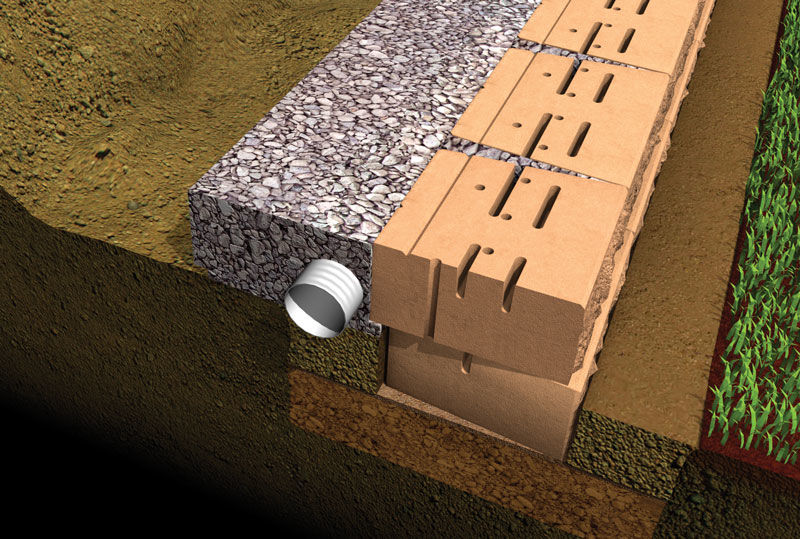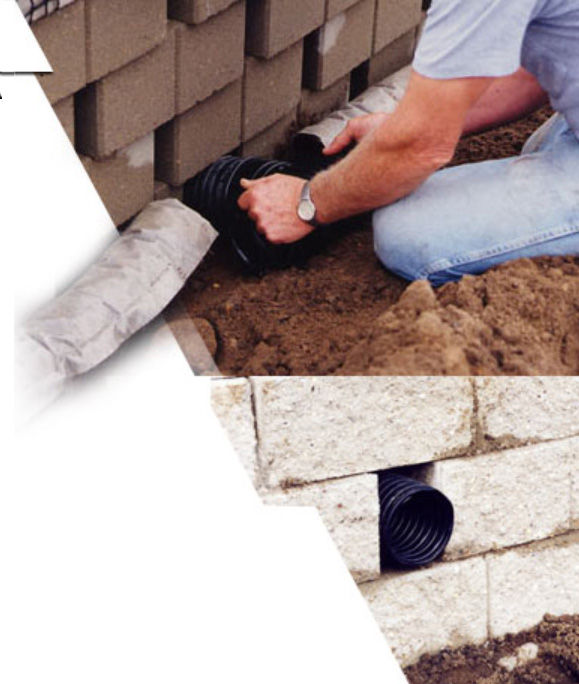With at least one above-grade course installed, you're ready to add drainage.
Place ¾-inch clear, free-draining angular aggregate to a minimum depth of 12 inches behind the wall.
Drainage aggregate must be free of fine soil to keep water pressure from building behind the wall face and to ensure that water can drain freely through the aggregate.
For walls over 3 feet tall, place a perforated drainpipe behind the first above-grade course, on 1 to 2 inches of drainage aggregate. The slots or holes in the perforated pipe should be on the BOTTOM of the pipe. The drain pipe should be sloped to provide gravity flow of the collected water.
With the drainpipe laid behind the wall, place more drainage aggregate on top of the drainpipe to a minimum depth of 12 inches behind the wall.
Note: Drainage aggregate is NOT recommended behind embedded units.
Install drainpipe outlets at the ends of the wall or through the wall face at least every 40 to 50 feet of wall length. Place outlet pipes at low points to direct the water out and away from the wall face.
When draining through the wall face, use a solid-pipe T-connector. At the lowest point, place this T-connector between two units and connect it to the perforated pipes on both sides. At the front face of the wall, cover the outlet pipe with a grate to keep it clear of debris.
If installing a wall in a water application or in high groundwater, additional drainage materials below and behind the wall may be needed. Filter fabric around the drainage aggregate or drainpipe may also be required.


